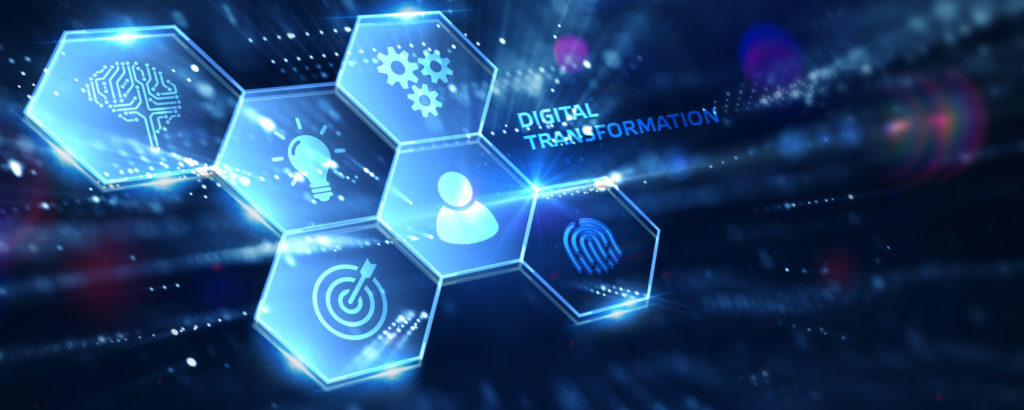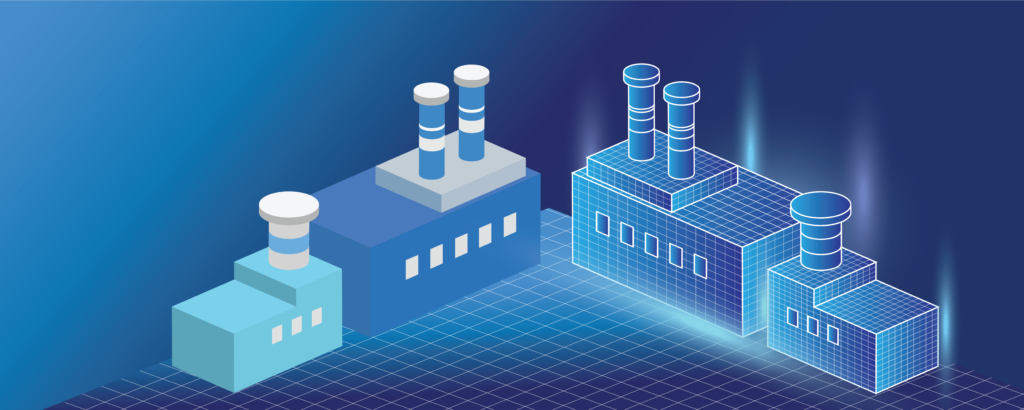A new EPRI initiative seeks to leverage the power of data and technology to support utilities as they navigate the energy transition
When the COVID-19 pandemic first triggered lockdowns in the spring of 2020, businesses in virtually all industries faced a dilemma: how to continue operating and engaging with customers when face-to-face interactions were impossible. For many companies, the answer was to initiate or redouble efforts to implement digital tools that allowed internal operations and collaboration to continue in a virtual world and, importantly, made it easy for customers to purchase goods and services online.
There are endless examples of how this played out. Faced with branch closures, for instance, banks made huge digital investments to allow customers to communicate with them on the digital channel of their choice and to perform transactions online. The need to quickly adapt to the pandemic dramatically accelerated the digital transformation already underway across the economy. In fact, a survey by McKinsey & Company at the end of 2020 found that the pandemic sped up the digitization of internal operations and customer and supply chain interactions by three to four years.
The Utility Industry’s Shift to Digital
Though not moving as rapidly, the utility industry is in the midst of its own digital transformation. A host of factors is spurring this transformation in addition to the pandemic. For instance, as large numbers of experienced utility employees near retirement, developing digital tools that institutionalize their knowledge and make it accessible to new workers becomes increasingly important. The proliferation of sensors and analytics capabilities such as machine learning algorithms also offers the opportunity to monitor the health of equipment in real-time and perform maintenance to prevent potential outages.
For over two decades, EPRI has collaborated with members, technology providers, and other stakeholders to research and test digital technologies with the potential to bolster worker effectiveness, improve asset monitoring, and provide greater clarity when making investment and operational decisions. Early work included the development of the Utility Communications Architecture in 1999 and the IntelliGrid Architecture Framework in 2005; both of these emphasized power delivery. Nuclear plant modernization, which has a significant digital focus, has been a dedicated research and development area since 2019. In 2017, EPRI launched the I4GEN Working Group for non-nuclear generation assets. I4GEN stands for Insight through the Integration of Information for Intelligent Generation.
As the name indicates, I4GEN’s efforts have been focused on leveraging advances in big data, artificial intelligence, and the Internet of Things to make power generation more flexible, cost-effective, and resilient. One example of I4GEN’s research is in the realm of advanced pattern recognition (APR) software to improve the monitoring of plant equipment. In the past, employees manually collected data from plant components. APR, by contrast, provides near-continuous collection and analysis of component data about everything from pressure and temperature to vibration and other parameters. This steady stream of data and analysis can surface trends indicating potential failures that can be prevented with proactive maintenance.
A More Holistic Approach to Digital Transformation
The development and implementation of digital tools across all aspects of the utility industry have led to a broadening of EPRI’s research and collaboration. While numerous digital transformation efforts such as I4GEN continue, EPRI’s cross-sector collaborative work in support of digital transformation seeks to connect the parallel sector-specific efforts to better support the overall shift towards a more distributed, decarbonized, and flexible power system.
“We are poised to do work under the umbrella of digital transformation to support the energy transformation as well as utilities facing practical challenges today,” said Susan Maley, an EPRI technical executive spearheading the effort. “A lot of our programs are working on technologies that contribute to a digital solution; we are trying to integrate those technologies systematically to advance the goals of our members.”
The benefits and applications of digital technologies can take many forms and depend very much on the priorities, existing systems, expertise, and business models of utilities. However, there are shared concepts that can help guide utilities in leveraging digital transformation to benefit their operations and their customers. A digital transformation framework has been a focus of EPRI’s work in 2022.
“This is a cross-sector effort. And from that, we will develop a set of common themes and a digital transformation maturity model that members can use to develop strategies and measure their progress,” Maley said. The themes and model are currently being developed and will seek to address several common challenges around digital tools and the data needed to make them valuable.
A Common Digital Transformation Resource Platform
A big challenge is bridging the gap between developing promising individual digital tools and utilizing them in a way that allows utilities to make tangibly better decisions. “There are EPRI staffers who have done phenomenal work developing tools, like a digital twin or advanced analysis tools,” Maley said. This is an important and necessary innovation. One goal of digital transformation is to transition these tools and algorithms to utilities to provide near-term tangible benefits.
“Our aim with digital transformation is to operationalize or institutionalize a suite of integrated technologies that provide for near-term benefits and fit within an overall digital strategy for an individual organization,” Maley said. “The digital tools and integrated technologies should enable a utility to make more informed decisions, acting in a more timely manner or with a better appreciation of the risks involved. They can also help to overcome a deficit in experience.” The digital transformation framework and maturity model support this overarching approach and transformation journey.
Although digital transformation will have different objectives and tools in the nuclear sector compared to, say, power delivery and utilization, there are some common themes and challenges across sectors. One instance involves data management and infrastructure. “The IT pieces of this are critical and are common,” Maley said. “The data infrastructure is agnostic about whether you’re trying to send electrons along a wire generated with nuclear or renewable power. It’s all data that has to be managed, analyzed, and used to make decisions.”
One of the challenges EPRI and others are addressing is how to overcome the fact that beneficial data often sits in multiple databases and software; this is what “siloed” data means. Making use of that data means extracting it, cleaning it, staging it, and making it available for analysis. One of the goals of digital transformation is to move from manual data management to automated data management. “What does the combination of digital transformation resources look like to integrate these systems?” Maley said.
Data management is also a talent issue that will likely remain a challenge if it isn’t addressed. For instance, utility employees with decades of experience may spend much of their time manually entering data instead of maintaining equipment or making planning decisions. “Their expertise is needed in the field or plants around operating and maintaining assets. These positions are hands-on, fast-paced, critical thinking, experience-based, and require timely decisions to be made,” Maley said. “But they may be spending a significant amount of their time on data entry.”
The work developing common themes and a digital maturity model is ongoing and will draw on EPRI’s cross-sector expertise. Ultimately, though, these and other tools and resources will support a fairly straightforward outcome: to use technologies and data to make better decisions.
Utilities have significant decisions ahead of them with regard to the ongoing energy transformation, which is intended to greatly expand electrification and dramatically reduce carbon emissions. By 2030 and 2050, power and electricity generation and delivery are envisioned to be very different than they are today. “How we manage the assets, empower the people in our industry, and optimize our systems will be largely based on data and information,” Maley said. “The digital transformation will be an important contributor to well-informed, timely decision making.”
EPRI Technical Expert:
Susan Maley
For more information, contact techexpert@eprijournal.com



